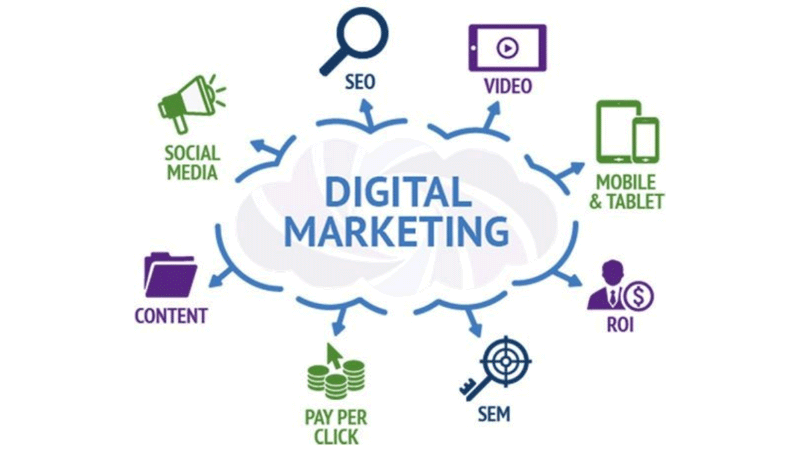Enhance Individual Experience and Drive Web Traffic With Receptive Web Layout
In today's digital landscape, where customers are accessing websites from a plethora of gadgets, responsive web layout has come to be more important than ever. With its capacity to adjust and effortlessly change to various screen dimensions, receptive layout not only enhances customer experience however also drives traffic to your website.
Why Receptive Website Design Matters
Receptive web layout is an essential element of modern internet development as a result of its ability to ensure optimal customer experience across numerous tools and screen sizes. With the spreading of mobile phones, tablet computers, and other smart phones, it has come to be critical for sites to adjust and provide smooth capability regardless of the tool being used.
The main reason responsive website design matters is that it permits users to have a constant and enjoyable surfing experience, despite the device they are using. A receptive internet site automatically readjusts its design, layout, and content components to fit the screen size and resolution of the gadget, making sure that customers can conveniently browse and connect with the internet site without any hassle or aggravation.
Furthermore, responsive website design additionally plays a significant role in search engine optimization (SEO) Internet search engine, such as Google, prioritize web sites that are responsive and mobile-friendly in their search results. By incorporating responsive design principles, sites can enhance their exposure and ranking, leading to increased organic traffic and potential consumers.

Boosting User Interaction With Responsive Layout
Enhancing user interaction is a key objective of receptive style, as it ensures that individuals can conveniently access and communicate with website content on any type of gadget. With the raising use tablet computers and smart devices, it is important for web sites to adjust to various display dimensions and resolutions. Responsive layout makes it possible for websites to immediately change their design and content to offer a seamless individual experience throughout tools.
Among the major ways receptive design increases individual interaction is by decreasing tons times. With a receptive website, users don't need to await different mobile variations to lots, resulting in faster access to web content. This better rate causes greater individual contentment and urges them to invest more time on the site.
Additionally, receptive layout boosts individual interaction by improving navigation and user interface (The Ad Firm web design agency). When a website is designed responsively, food selections and switches are maximized for touch communications, making it easier for users to browse and communicate with the site on their mobile phones. This straightforward and instinctive experience maintains individuals involved and motivates them to explore even more of the internet site
Furthermore, receptive style permits far better web content exposure and readability. By adapting the design and font dimensions to different tools, responsive internet sites ensure that individuals can easily review and understand the web content. This enhances user interaction by reducing the requirement for zooming or scrolling to check out the text.
Boosting Website Web Traffic With Responsive Internet Design
With the growing appeal of mobile tools, having a site that is receptive to various screen dimensions and resolutions is essential for driving enhanced web traffic. In today's digital landscape, users are accessing sites from a variety of gadgets such as smart devices, tablet computers, and desktop. Each of these tools has various display sizes and resolutions, and if your web site is not created to adjust to these variants, it can cause a bad individual experience and a loss of prospective web traffic.
Receptive internet style makes sure that your web site looks and works efficiently throughout all devices. By using adaptable grids, liquid pictures, and media inquiries, responsive design enables your website to automatically adjust its navigating, web content, and design to fit any display dimension. This indicates that individuals will have a smooth surfing experience no matter whether they are using a big desktop or a tiny mobile phone computer.
Crucial Element of Reliable Receptive Design
Effective receptive layout includes a number of essential components that ensure a seamless customer experience across various tools. This allows material to be presented in a legible and visually enticing manner on any type of gadget.
An additional important aspect is media inquiries. These permit developers to apply different styles and designs based upon the qualities of the customer's tool, such as screen size and orientation. By utilizing media inquiries, developers can enhance the discussion of content for each gadget, making sure that it is readable and quickly available.
Receptive pictures are likewise crucial in effective responsive design. Pictures that are as well large can decrease page load times on mobile phones, while images that are as well little may show up pixelated on bigger screens. By making use of techniques such as receptive picture resizing and careless loading, designers can additional info make sure that images are properly sized and optimized for each device.
Last but not least, efficient receptive layout includes a mobile-first technique. This suggests making and focusing on content for smart phones first, and afterwards increasing and enhancing the style for larger displays. This method makes certain that one of the most crucial material is easily obtainable on smaller sized displays, while still providing a rich experience on bigger devices.
Best Practices for Implementing Receptive Web Style
Carrying out receptive internet style needs cautious consideration of various best practices to guarantee an ideal customer experience throughout different devices. When applying responsive internet style., below are some crucial finest methods to follow.
Firstly, it is vital to prioritize mobile users. With the increasing supremacy of smart phones, making for mobile-first has come to be vital. Start by creating for smaller sized screens and after that considerably improve the format for larger displays.

An additional important ideal practice is to enhance pictures for various display resolutions. Huge photos can reduce the packing time of your internet site, especially on mobile tools with slower links. Use receptive pictures that can be resized based upon the gadget's screen resolution to enhance efficiency.
Furthermore, examination your site on various tools and screen dimensions to make sure a constant and smooth experience. There are numerous testing tools available that can assist you recognize any problems and make necessary modifications.
Last but not least, focus on usability and availability. Ensure that your internet site is easy to navigate, with clear and succinct material. See to it that your internet site comes to individuals with disabilities and complies with accessibility guidelines.
Final Thought
In verdict, responsive web layout plays a vital function in improving individual experience and driving traffic to websites. By taking on responsive layout principles, websites can make sure optimum checking out experiences across various devices, leading to boosted user involvement.
Enhancing customer involvement is a crucial goal of useful content receptive design, as it makes sure that users can quickly access and engage with web site material on any kind of gadget. Receptive design allows websites to immediately adjust their format and web content to offer a smooth user experience across gadgets.
In addition, responsive style boosts user interaction by boosting navigation and user interface.Receptive photos are likewise important in reliable responsive design. By embracing receptive why not try these out layout concepts, websites can make certain optimal checking out experiences throughout various devices, leading to increased individual interaction.